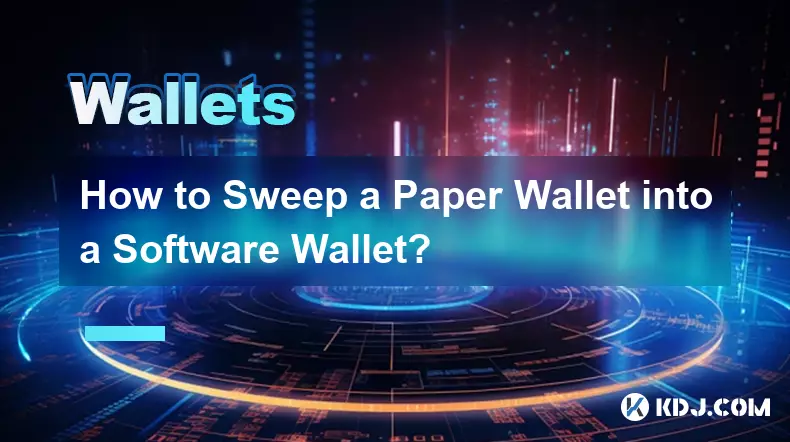-
 bitcoin
bitcoin $95203.028270 USD
-4.12% -
 ethereum
ethereum $3151.730711 USD
-1.61% -
 tether
tether $0.999170 USD
-0.04% -
 xrp
xrp $2.273039 USD
-1.55% -
 bnb
bnb $924.288432 USD
0.14% -
 solana
solana $141.112899 USD
-2.02% -
 usd-coin
usd-coin $0.999964 USD
0.02% -
 tron
tron $0.293976 USD
0.82% -
 dogecoin
dogecoin $0.160772 USD
-1.84% -
 cardano
cardano $0.506357 USD
-3.90% -
 hyperliquid
hyperliquid $37.900515 USD
0.03% -
 zcash
zcash $644.358451 USD
26.66% -
 chainlink
chainlink $14.062007 USD
-2.60% -
 bitcoin-cash
bitcoin-cash $484.381072 USD
-5.12% -
 unus-sed-leo
unus-sed-leo $9.199874 USD
0.27%
How to find my Bitcoin address on my Ledger Nano X?
Your Ledger Nano X generates a new Bitcoin address for each transaction—always verify the address on your device screen before sharing it.
Oct 31, 2025 at 08:54 am

Accessing Your Bitcoin Address Through Ledger Live
1. Connect your Ledger Nano X to your computer using the provided USB cable and unlock it by entering your PIN code.
2. Open the Ledger Live application on your desktop and ensure it recognizes your device.
3. Navigate to the 'Accounts' section and click on 'Add Account' if you haven’t already set up a Bitcoin account.
4. Select Bitcoin (BTC) from the list of available cryptocurrencies and confirm the addition on your Ledger device.
5. Once added, click on the Bitcoin account in Ledger Live to view your receiving address—this is your public Bitcoin address.
Locating the Address Directly on the Device
1. From the home screen of your Ledger Nano X, scroll and open the Bitcoin app by pressing both buttons simultaneously.
2. Wait for the app to load; once loaded, press both buttons again to access the main menu within the app.
3. Select “Receive” from the options displayed on the screen.
4. The device will show your Bitcoin address in segments due to the small screen size—navigate through each segment using the buttons.
5. Verify that the address shown on the Ledger screen matches exactly what appears in Ledger Live or any connected interface before sharing it.
Ensuring Security During Address Retrieval
1. Always confirm the Bitcoin address directly on the Ledger Nano X’s screen when sending or receiving funds.
2. Never disclose your recovery phrase or PIN to anyone, and avoid entering them on any website or third-party software.
3. Make sure your Ledger Live and device firmware are updated to the latest versions to prevent vulnerabilities.
4. Double-check the URL of the Ledger website to avoid phishing attempts when downloading software.
5. Use only the official Ledger Live app from the Ledger website to manage your assets.
Understanding Address Formats and Compatibility
1. Bitcoin addresses generated by Ledger can be in different formats such as Legacy (starting with '1'), SegWit (starting with '3'), or Bech32 (starting with 'bc1').
2. Ledger Live typically defaults to generating Bech32 addresses for better fee efficiency and compatibility with modern wallets.
3. Some older exchanges or services may not support Bech32 addresses—verify compatibility before initiating transfers.
4. If needed, you can create a different address type manually in advanced settings within Ledger Live.
5. Always send a small test transaction first when using a new address format to confirm successful receipt.
Frequently Asked Questions
Can I have multiple Bitcoin addresses on my Ledger Nano X?Yes, your Ledger generates a new address for each transaction as part of its hierarchical deterministic (HD) wallet structure. This enhances privacy and security by avoiding address reuse.
What should I do if Ledger Live doesn’t recognize my device?Ensure the device is properly connected and unlocked. Try a different USB cable or port. Update Ledger Live and check for firmware updates. Restart both the app and device if necessary.
Is it safe to copy my Bitcoin address from Ledger Live?Yes, as long as Ledger Live is genuine and your computer is free of malware. Always cross-verify the first and last few characters of the address on your Ledger device screen.
Why does my Bitcoin address change every time?This is normal behavior. HD wallets generate a new address for each incoming transaction to improve privacy and reduce the risk of tracking across transactions.
Disclaimer:info@kdj.com
The information provided is not trading advice. kdj.com does not assume any responsibility for any investments made based on the information provided in this article. Cryptocurrencies are highly volatile and it is highly recommended that you invest with caution after thorough research!
If you believe that the content used on this website infringes your copyright, please contact us immediately (info@kdj.com) and we will delete it promptly.
- Decoding the Crypto Crystal Ball: Will Apeing Outpace XRP and BNB in 2025?
- 2025-11-15 12:25:02
- HBAR, Zero Knowledge, and the Privacy Revolution: What's the Smart Money Doing?
- 2025-11-15 11:40:02
- Crypto Presales Face-Off: Is Digitap ($TAP) Really Toppling BlockDAG?
- 2025-11-15 11:35:01
- Tokenization, 24/7 Markets, and Vlad Tenev: The Future of Finance?
- 2025-11-15 11:30:01
- Bull Market Bonanza: Crypto Presales and Explosive Growth Opportunities
- 2025-11-15 11:25:01
- Crypto Carnage: Navigating Selling and Liquidations in a Wild Market
- 2025-11-14 16:50:01
Related knowledge

How to Use a Testnet Wallet for Development and Testing?
Nov 14,2025 at 06:20pm
Understanding Testnet Wallets in Blockchain Development1. A testnet wallet functions similarly to a mainnet wallet but operates on a blockchain networ...

How to Create a Watch-Only Wallet for Monitoring Funds?
Nov 15,2025 at 02:39am
Understanding Watch-Only Wallets in the Crypto Ecosystem1. A watch-only wallet is a type of cryptocurrency wallet that allows users to monitor blockch...

How to Sweep a Paper Wallet into a Software Wallet?
Nov 14,2025 at 10:59pm
Understanding Paper Wallets and Software Wallets1. A paper wallet is a physical document that contains a cryptocurrency public address and a private k...

Understanding Transaction Fees in Your Crypto Wallet.
Nov 15,2025 at 02:40pm
How Transaction Fees Work in Cryptocurrency Wallets1. Every time a user sends cryptocurrency from one wallet to another, the transaction must be verif...

The Ultimate Guide to Choosing the Right Crypto Wallet.
Nov 14,2025 at 01:20pm
Understanding the Types of Crypto Wallets1. Hot wallets are digital wallets connected to the internet, making them convenient for frequent transaction...

How to Set Up and Use a Solana Phantom Wallet?
Nov 14,2025 at 09:19am
Creating Your Solana Phantom Wallet1. Navigate to the official Phantom wallet website using a secure browser. Download the extension compatible with y...

How to Use a Testnet Wallet for Development and Testing?
Nov 14,2025 at 06:20pm
Understanding Testnet Wallets in Blockchain Development1. A testnet wallet functions similarly to a mainnet wallet but operates on a blockchain networ...

How to Create a Watch-Only Wallet for Monitoring Funds?
Nov 15,2025 at 02:39am
Understanding Watch-Only Wallets in the Crypto Ecosystem1. A watch-only wallet is a type of cryptocurrency wallet that allows users to monitor blockch...

How to Sweep a Paper Wallet into a Software Wallet?
Nov 14,2025 at 10:59pm
Understanding Paper Wallets and Software Wallets1. A paper wallet is a physical document that contains a cryptocurrency public address and a private k...

Understanding Transaction Fees in Your Crypto Wallet.
Nov 15,2025 at 02:40pm
How Transaction Fees Work in Cryptocurrency Wallets1. Every time a user sends cryptocurrency from one wallet to another, the transaction must be verif...

The Ultimate Guide to Choosing the Right Crypto Wallet.
Nov 14,2025 at 01:20pm
Understanding the Types of Crypto Wallets1. Hot wallets are digital wallets connected to the internet, making them convenient for frequent transaction...

How to Set Up and Use a Solana Phantom Wallet?
Nov 14,2025 at 09:19am
Creating Your Solana Phantom Wallet1. Navigate to the official Phantom wallet website using a secure browser. Download the extension compatible with y...
See all articles









































































